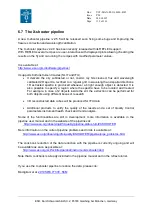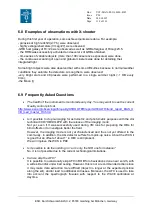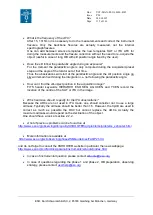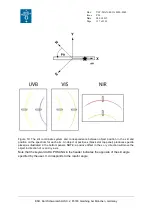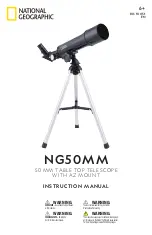
Doc:
Issue
Date
Page
VLT-MAN-ESO-14650-4942
P96
24.06.2015
102 of 161
ESO, Karl-Schwarzschild-Str. 2, 85748 Garching bei München, Germany
5.1.2 Execution time computation and how to minimize the overheads
a) Example 1: slit mode, UVB/VIS arms execution time higher than the NIR one
An user defines the observation of a star magnitude 15 in V.
He uses a direct acquisition.
He needs for reaching the desired signal to noise ratios, exposure times of 100s in UVB,
100s in VIS, 60s in NIR.
In such case, the overheads are:
The acquisition and setup overheads
XSHOOTER_setup=409+10+30=449s (acquisition integration times of 1s)
+ the overheads coming from the delay of the the overheads coming from the
readout times:
The UVB and VIS arms will integrate both during 100s but because they share the same
FIERA and that the exposures will be readout sequentially, this implies a large dead time.
The NIR arm exposure will be finished in 60s+1.46s readout, it is negligible with respect to
the UVB/VIS arms times.
The UVB/VIS arms dominate the execution time of the OB.
If the readout mode is 100KHz,1x1 for both arms, it means that the total time will be:
UVB or VIS integration + readout time of UVB arm + readout time of the VIS arm=257s,
corresponding to 100s of integration time and 157s of readout time
To optimize this time, then one can do:
UVB exposure of 100s, the readout time is here of 68s, therefore the VIS arm can still
integrate during 68s more.
One solution could be to do
UVB exposure of 100s, VIS exposure of 168s.
Then the execution time will be:
VIS exposure time of 168s + readout time of VIS arm=257s
that is the same time than before but better optimized for science purpose. This is a way to
decrease the deadtime because we have 168s of integration time and only 89s of readout
time.
In this example, the user could also increase without problems the number of NIR exposures
from 1 to 4 exposures (4x61.46=246s < 257s).
b) Example 2: NIR execution time higher than the UVB/VIS arms
Same kind of observation than in a) but the NIR integration time must be of 600s and the
readout modes for the UVB/VIS are 400khz,1x1.
In such case, they can optimize the UVB and VIS exposures like this:
UVB arm t=100s
VIS arm t=100s+16s(readout time of the UVB arm)=116s
The execution time for the UVB/VIS arms is 116+21(VIS readout time)=137s
The execution time in the NIR is 600s + 1.46s=601.46s
In such case, the users can decide to take 4 UVB/VIS exposures (4x137=548s <601s), if the
user decide to go to 5 UVB/VIS exposures, then the execution time will be dominated by the
UVB/VIS couple (5x137=685s > 601s=NIR time).


























